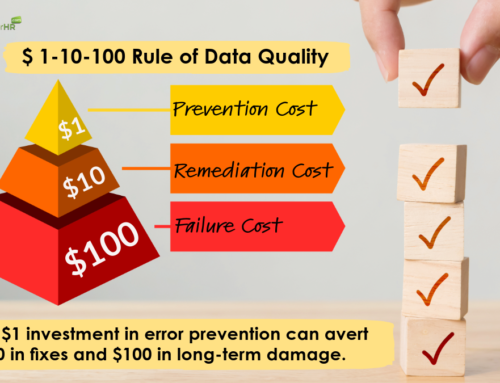Preserve Your Positive Culture: Identifying and Managing Difficult Employees
A positive organizational culture is vital for fostering collaboration, driving engagement, and achieving business objectives. In every company, big or small, there are people who help it grow and those who, sometimes without even realizing it, can make things tough for everyone else. But why do some people act in ways that hurt the team spirit?
Some do it because of past experiences that have made them cautious or defensive. Others might think that being sneaky or tricky is the only way to get ahead. And then, there are those who simply act this way because it’s all they’ve ever known.
In this article, we’ll take a closer look at these individuals. Not to blame, but to understand and find ways to make our workplaces better for everyone. Let’s dive in and figure this out together in more details!
Types of employees who may be affecting positive culture:
- The Gaslighter (The most challenging one to deal with)
Gaslighting is a manipulative tactic where individuals attempt to make others doubt their own perceptions, memories, or even their sanity. In the workplace, gaslighter employees often exhibit behaviors that can be disruptive to both individuals and the broader team dynamic. They might deny past statements or actions, even when presented with evidence to the contrary, and frequently trivialize others’ feelings or concerns, suggesting that they are overreacting or being overly sensitive. These employees might also deliberately withhold information, ensuring others don’t have the full picture, thereby maintaining a level of control. When faced with uncomfortable topics, they are adept at diverting conversations, using confusion, or presenting conflicting information to make others second-guess themselves. This behavior often extends to mocking or ridiculing others’ reactions to undermine their confidence. In more extreme instances, gaslighters might attempt to isolate their targets from colleagues, diminishing their support system, all while projecting their own negative behaviors onto others. - The Politician:
Politicians prioritize personal agendas over team goals. They’re known for backroom dealings, forming cliques, and leveraging relationships rather than merit to climb the organizational ladder. - The Gossip Monger:
This person thrives on rumors and informal communication, often spreading misinformation or half-truths that can cause unnecessary panic or conflict. - The Perpetual Pessimist:
Always focusing on the negative, this individual dampens team morale with their constant naysaying and reluctance to embrace new ideas or changes. - The Credit Thief:
They take credit for others’ work, undermining the efforts of their colleagues and causing resentment within the team. - The Lone Wolf:
This individual resists collaboration, preferring to work in isolation. Their reluctance to be a team player can hinder collective efforts and growth. - The Drama Enthusiast:
They overreact to situations, blowing things out of proportion and creating a scene over minor issues, leading to unnecessary distractions. - The Task Avoider:
Constantly dodging responsibilities and pushing their tasks onto others, this employee disrupts the workflow and burdens their colleagues. - The Resistant-to-Change:
This person is stuck in their ways and resists any new processes, technologies, or ideas, hindering innovation and growth. - The Silent Saboteur:
Unlike overtly disruptive colleagues, these individuals subtly undermine projects and decisions, often behind the scenes, leading to unexpected setbacks.
Mitigation Plan:
- Open Channels of Communication:
Encourage employees to voice their concerns and provide feedback about any disruptive behaviours they witness or experience. - Training and Workshops:
Organize training sessions on teamwork, communication, and conflict resolution to equip employees with the skills to deal with or avoid toxic behaviors. Ensure your managers are fully aware of the above type of employee behaviors so they can avoid such psychological manipulations instead they take the right course of action. - Clear Job Descriptions:
Ensure that every employee knows their role and responsibilities, reducing the chances of task avoidance or credit theft. - Performance Reviews:
Regularly assess employee performance and behavior, addressing any negative patterns or disruptions. - Mentoring and Counseling:
Offer guidance and counseling to employees displaying toxic behaviors, helping them recognize and rectify their actions. - Promote a Culture of Recognition:
By recognizing and rewarding genuine effort and collaboration, you can discourage behaviors like credit theft and encourage teamwork. - Anti-Gossip Policies/ Open Forum:
Establish clear consequences for spreading rumors or engaging in harmful gossip. Sometimes it’s difficult to track the origin however it’s okay to talk openly. I have seen many leaders openly talk/laugh about some of these irrelevant gossip going around in the organization. - Change Management Training:
Equip employees with the skills to adapt to and accept change, reducing resistance. - Team Building Activities:
Regular team-building exercises can foster unity, break down barriers, and reduce the influence of cliques or politicians. - Zero Tolerance Policy:
In extreme cases, where counseling and guidance don’t result in behavioral change, consider implementing a zero-tolerance policy for behaviors that severely undermine the organizational culture.
In Conclusion
In most organizations, you’ll find a range of personalities. Some can challenge the harmony we strive for. The key is to spot these challenges early and face them head-on with adequate approaches such as: promoting open talks, proper cultural training, unambiguous policies, teamwork, celebrating the good, etc. This way, we can ensure our workplace remains a positive space for all.
Disclaimer: The opinions in this article are the author’s own and not of any associated employer(s).






